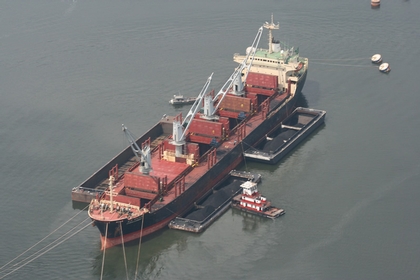
(STEVENS TOWING CO. OF NORTH CAROLINA LLC, STEVENS TOWING CO. INC., J & R EQUIPMENT LLC, STEVENS MARINE SERVICES INC.)
Steven's Towing began in 1903, when two Brothers began shipping cabbage. As their family expanded so did the demand for their services.
The Stevens family found their roots in South Carolina since in late 17th century. However, some of the family migrated to Georgia, the direct descendents of the Stevens family remained in the Lowcountry region of South Carolina. Moving closer to the coastline proved to be the beginning of Stevens Towing.
In the 18th and 19th centuries; the Stevens family witnessed and survived several important historical changes. From the Revolutionary War to the Civil War, the Stevens held various occupations such as Doctors, Ministers, Storekeepers and Planters.
Transportation by roads had become difficult because of flooding and lack of maintenance. Carriages and horseback were the most common modes of transportation, especially inland. Oxcarts were often used to bring produce and goods to landings for transport by rivers. Brothers, Joseph Stanyarne and William Yates Stevens, acknowledged the need for reliable water transportation from Edisto Island to Charleston, and points in between.
In the late 1800’s (estimated about 1878), the company, Stevens Brothers began providing service after purchasing their first boat, the Mary Draper.
In 1903, the Stevens Brothers were expanding, and so was the family. Both brothers had married and each had a son. More vessels were needed to handle the market, for not only produce and supplies, but also passengers depending on reliable transportation. The company became Stevens Line Company until 1913 through the 1970’s. When the name then became Stevens Towing Company, Incorporated.
The company began hauling produce such as cabbage, potatoes, cucumbers and beans. Farmers would bring their crops out to the freight boat in their small boats. It was brought to Yonges Island, South Carolina to be put on the train to carry into Charleston, South Carolina.